In a world that often feels chaotic and overwhelming, sometimes the best medicine doesn’t come from a pharmacy—it comes on four paws, with a wagging tail and soulful eyes. Therapy dogs are living, breathing bundles of emotional support, providing comfort to those battling stress, anxiety, trauma, or loneliness. But not every dog breed is suited for this incredibly sensitive role.
Certain breeds shine in therapeutic settings due to their calm demeanor, empathy, and eagerness to please. These dogs don’t just offer companionship—they forge healing connections that improve lives in hospitals, schools, nursing homes, and private homes alike.
But what makes a great therapy dog? Is it all about personality, or does size, intelligence, and trainability play a role too?
Today, we’ll walk you through the top popular therapy dog breeds that go beyond wagging tails—they truly change lives. Whether you’re seeking a furry friend for yourself or looking to train a dog to help others, this list will guide you to the breeds that bring warmth where it’s needed most.
Therapy Dog Breeds
1. Border Collie
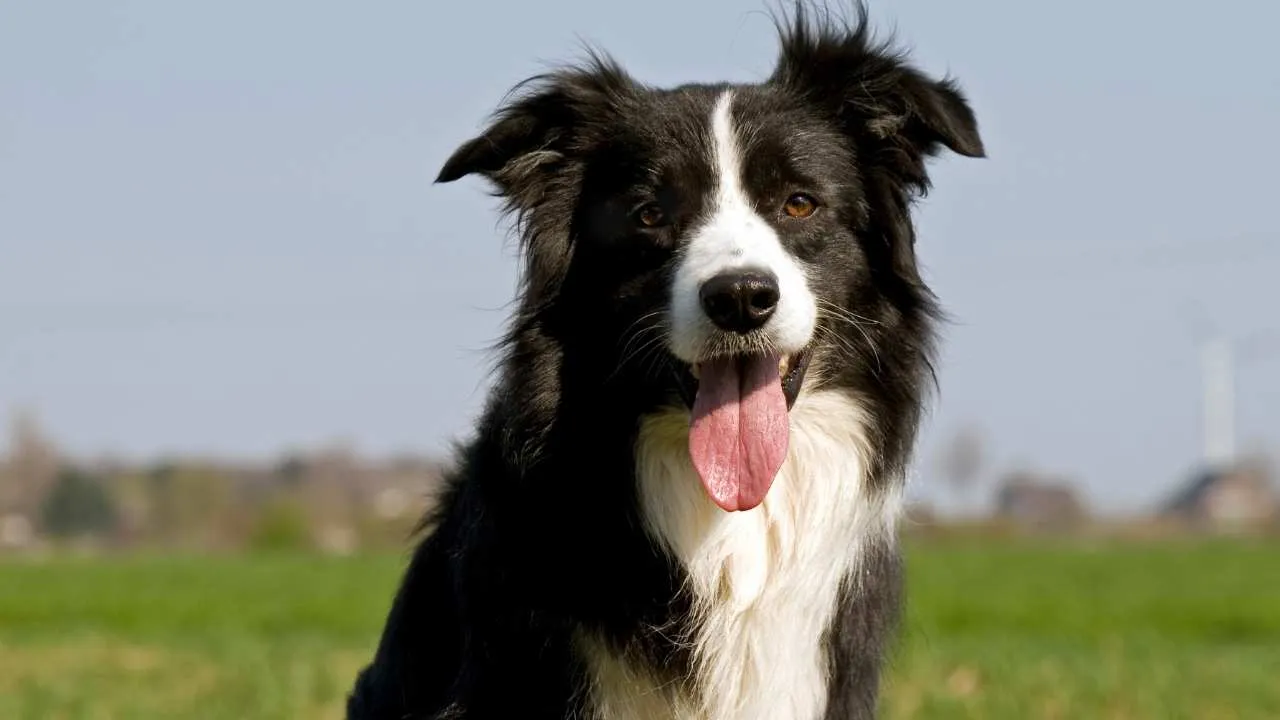
Meet the Border Collie — the dog world’s version of a genius multitasker who’s always ready to help. Known for their razor-sharp intelligence and boundless energy, these pups aren’t just herding sheep — they’re herding hearts and making lives better as top-tier therapy dogs.
Border Collies typically weigh between 30 to 55 pounds and measure around 18 to 22 inches in height. They often feature a medium-length, wavy double coat, though short-haired versions are also quite common.
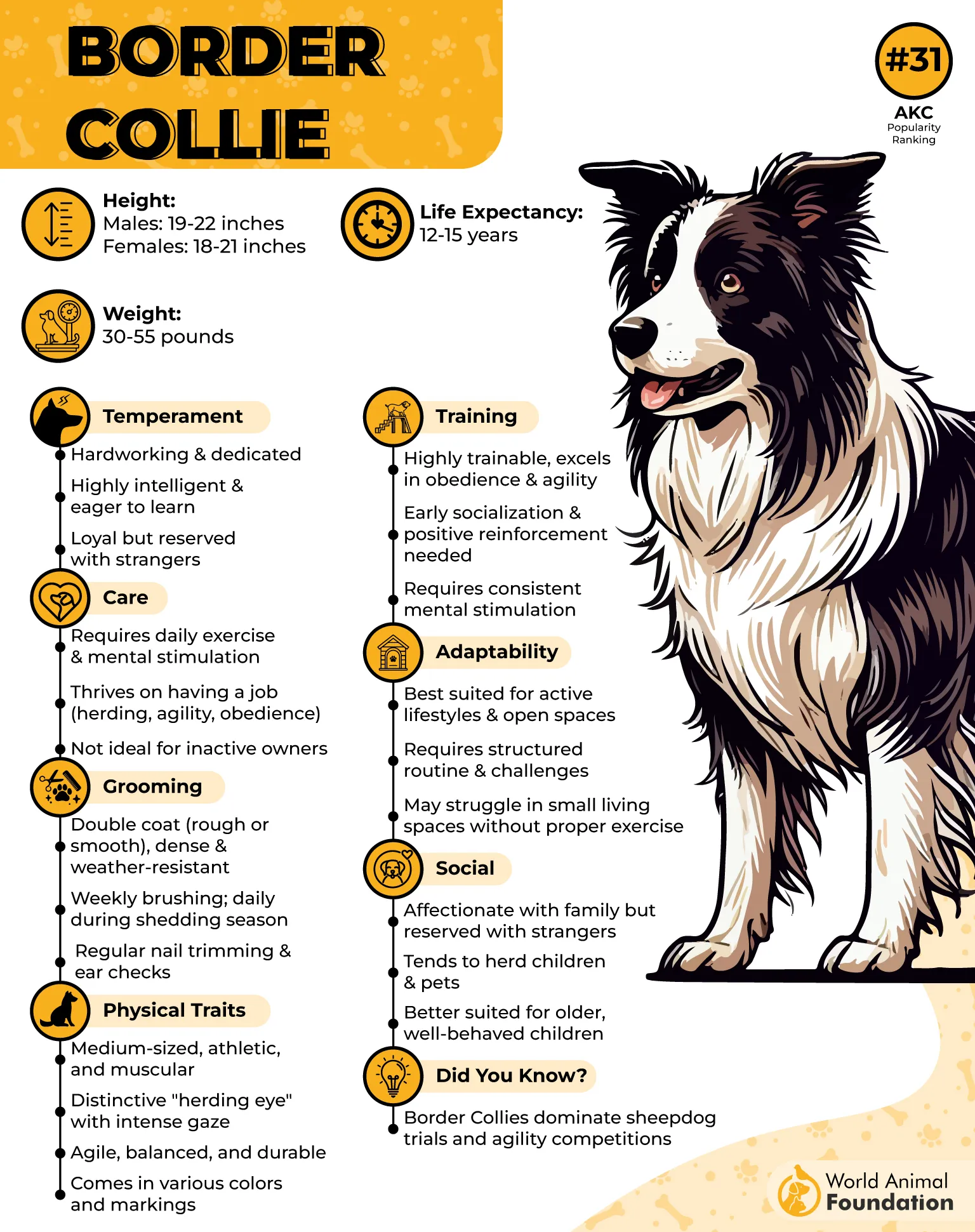
Border Collies thrive when they have a purpose, and what better purpose than being a loyal companion who supports their human’s emotional and physical needs?
Their incredible ability to learn complex tasks quickly makes them excellent therapy dogs, guiding, assisting, and comforting with a precision that would make even the most seasoned professionals nod in approval.
Why They Make Good Therapy Dogs:
✔ Super smart and quick to learn new tasks
✔ Exceptionally loyal and empathetic
✔ Full of energy but knows when to switch to “comfort mode”
PetPlan notes that as a working breed, Border Collies require daily long walks and plenty of playtime to keep them mentally stimulated and prevent boredom-related mischief.
But don’t let their workaholic reputation fool you — Border Collies are also affectionate and sensitive, with a sixth sense for when their human needs an extra cuddle, a nudge, or just a goofy distraction from a rough day. Think of them as your brainy cheerleader, always ready to brighten your mood or help keep life on track.
Fun Fact: Border Collies have been known to learn over 1,000 words — so you can probably have a full conversation with your furry therapist. (Just don’t expect them to take notes.)
2. Golden Retriever
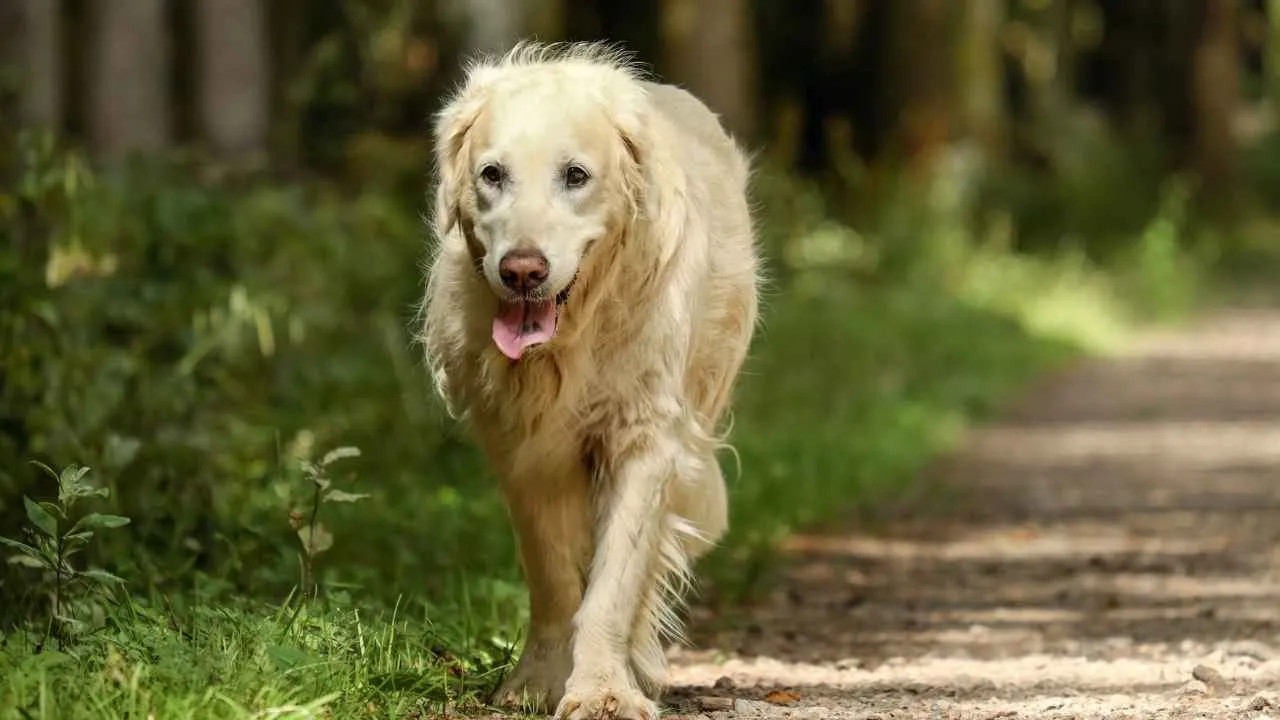
If there’s a dog version of a “golden child,” it’s the Golden Retriever. This breed keeps its puppy-like enthusiasm well into adulthood, meaning every day is a new adventure filled with wagging tails and eager smiles.
Golden Retrievers are among the most beloved dog breeds in the United States. Golden Retrievers typically stand about 21 to 24 inches tall at the shoulder and weigh between 55 and 75 pounds.
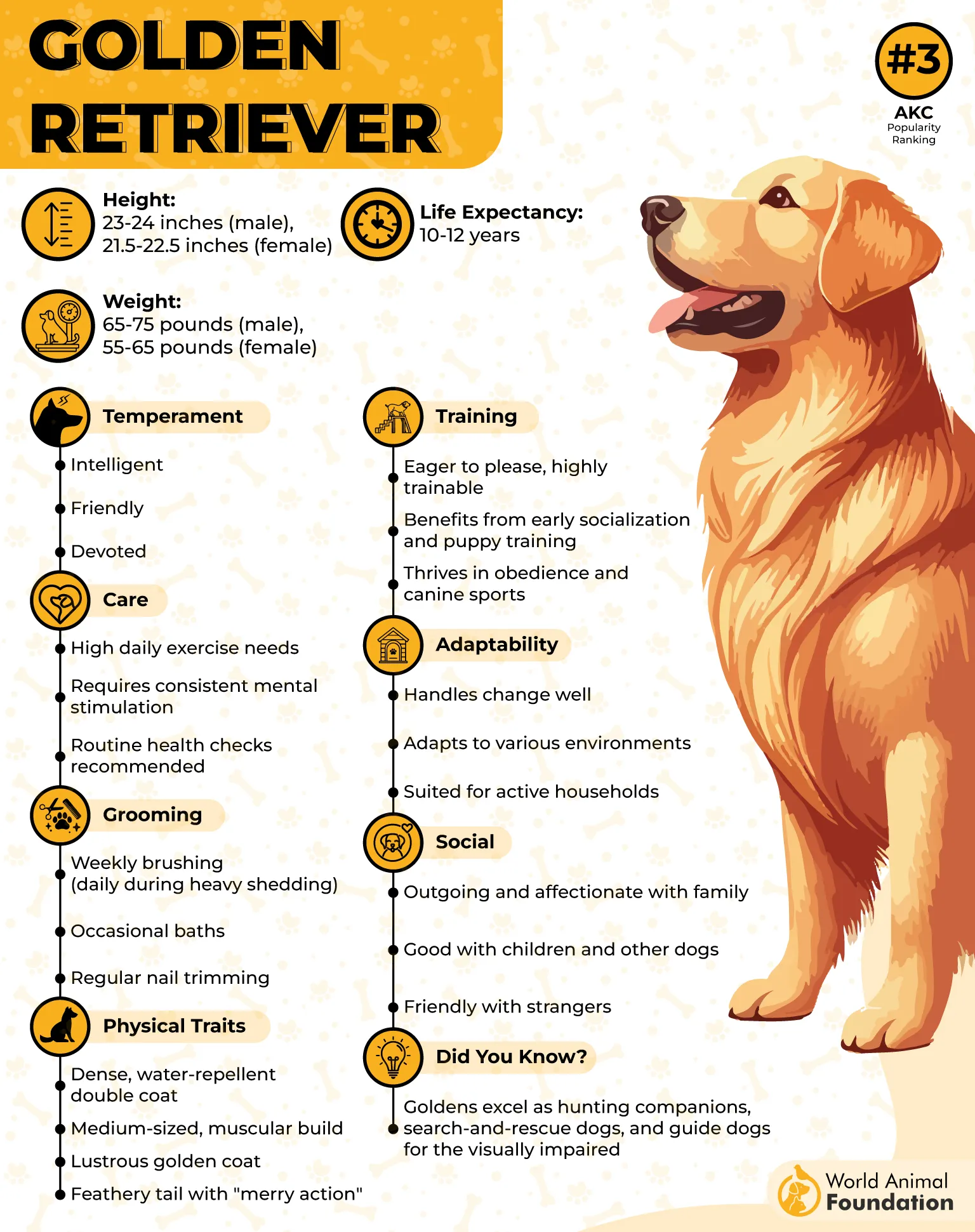
Golden Retrievers are known for their friendly, gentle, and loyal nature. They’re affectionate, eager to please, and great with families and children, making them excellent companion dogs.
Their sunny disposition and eagerness to please make them absolute rockstars in the world of therapy and service dogs. Britannica states they are also commonly trained to serve as guide dogs for the visually impaired.
Why They Make Good Therapy Dogs:
✔ Endless enthusiasm — life is always a game!
✔ Naturally gentle and incredibly patient
✔ A built-in therapist who never charges by the hour
Golden Retrievers are like that perfect friend who’s always ready to lend a hand — or a paw.
Golden Retrievers make excellent companions for hiking and jogging in cool weather. While they’re not typically built for marathons, with proper training and precautions to prevent overheating, they can complete long-distance runs.
Whether you need physical assistance, emotional support, or just a fluffy cheerleader to brighten your day, Goldies step up with loyalty, patience, and boundless love. They’re highly trainable, soaking up commands and skills like a sponge — all while flashing that classic golden smile.
Fun Fact: Goldies have been known to perform all kinds of assistance tasks — from guiding visually impaired owners to providing comfort during stressful medical procedures. They’re superheroes disguised as golden fluff.
3. Labrador Retriever

When it comes to being friendly, loving, and dependable, few breeds can beat the Labrador Retriever. Consistently ranked as one of the most popular breeds in the U.S., Labs have a natural charm that wins over hearts everywhere, including in the therapy dog world.
Labrador Retrievers usually weigh between 55 and 80 pounds, with females generally being on the lighter side. They typically stand 21 to 25 inches tall. Labradors have a broad skull and nose, a deep chest, a strong tail, and a muscular physique.
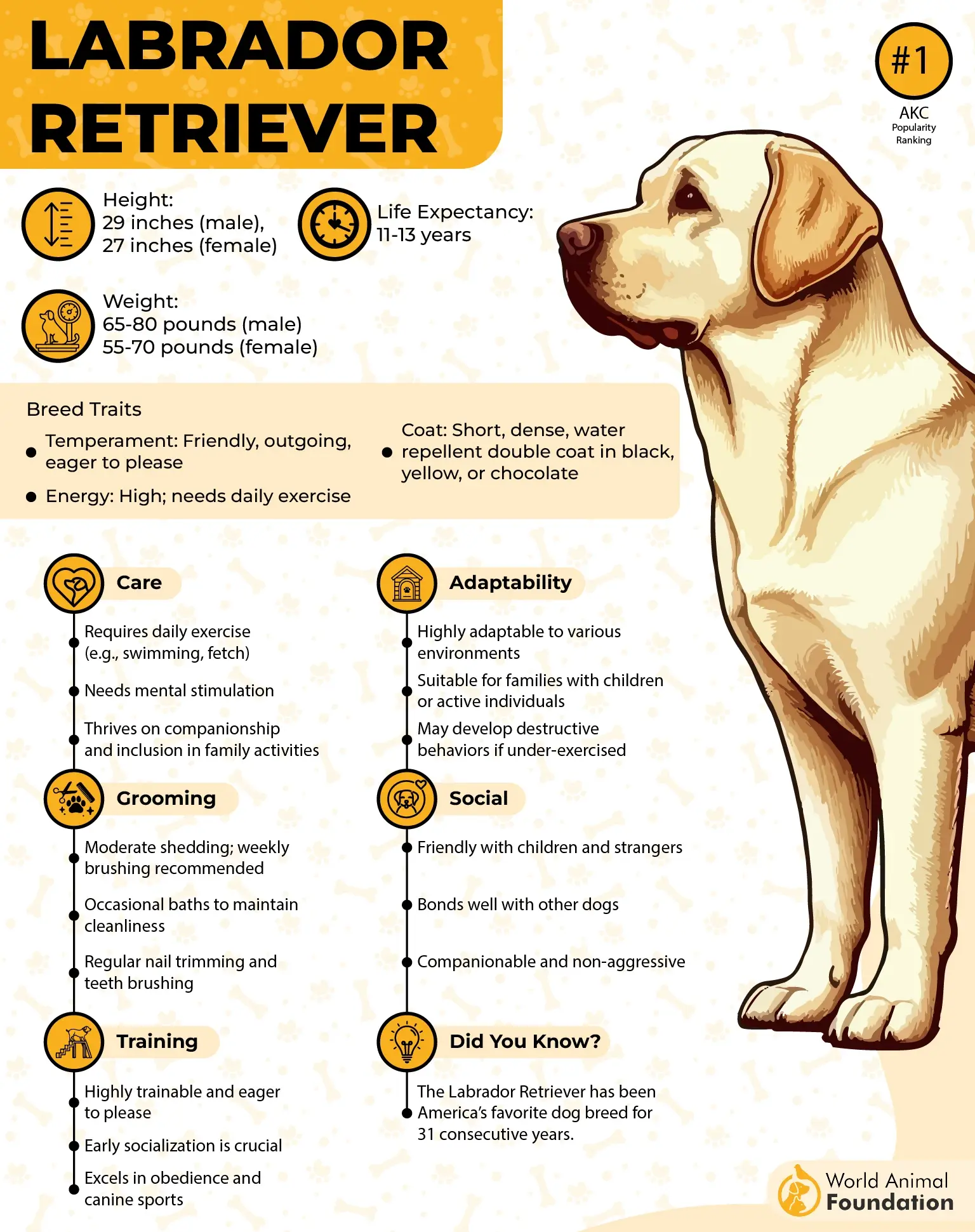
Labs are the Swiss Army knives of dogs: affectionate family companions, energetic playmates, and super-skilled assistance dogs.
Why They Make Good Therapy Dogs:
✔ Friendly, gentle, and endlessly loving
✔ Smart and eager to work alongside their humans
✔ Always ready with a wagging tail and a helping paw
Their calm temperament and strong work ethic make them ideal partners for service dog work for people needing emotional support or help with daily tasks. Plus, they’re always up for a game of fetch — because therapy is better with a tennis ball.
Labrador Retrievers require plenty of exercise and attention to stay happy. Typically, each Lab needs about an hour of physical activity daily.
Fun Fact: Labs often serve as therapy dogs in hospitals, schools, and nursing homes, spreading smiles and comfort wherever they go, sometimes better than a cup of coffee
4. Pomeranian
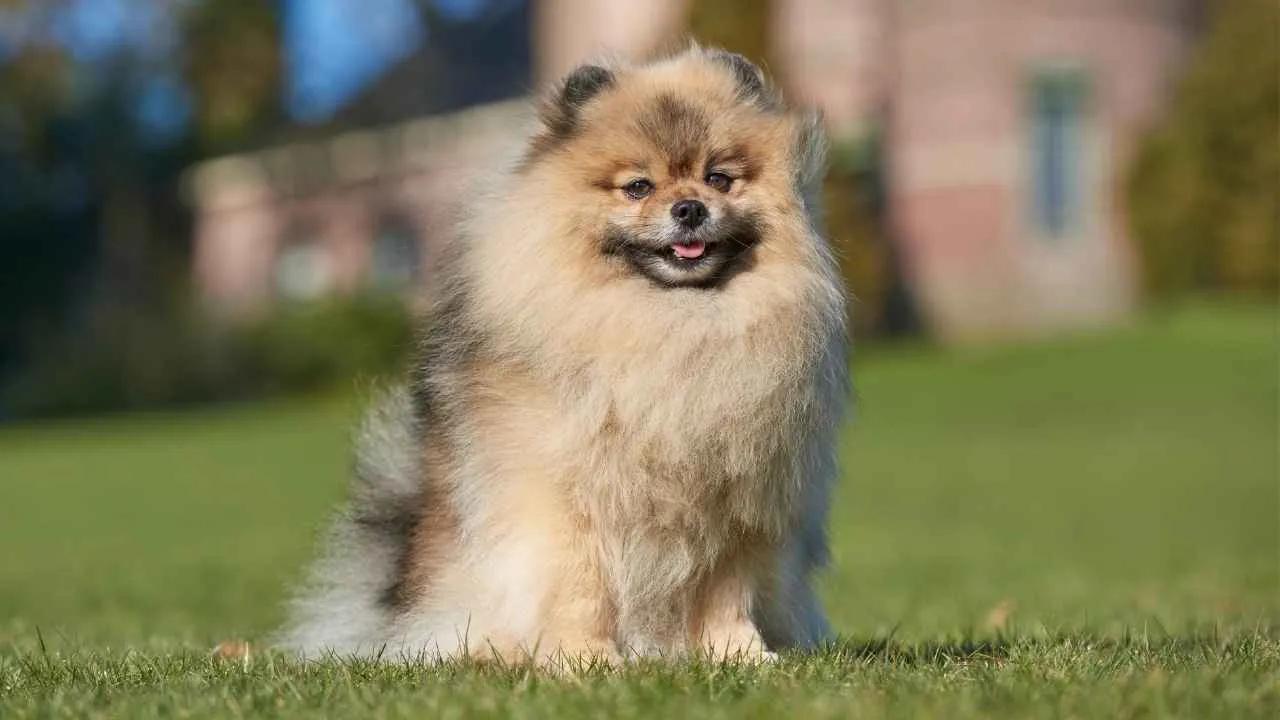
Don’t let the Pomeranian’s small size fool you — these little fluff balls pack a mighty emotional punch! While they might not be pulling wheelchairs or balancing on tricky tasks, Poms have their special superpowers. Think of them as the pocket-sized comfort ninjas of the therapy dog world.
They were selectively bred to be smaller, resulting in the Pomeranian we know today as one of the smallest dog breeds, standing just 6–7 inches tall and weighing between 3 and 7 pounds.
Pomeranians have a fox-like face, a thick ruff of fur around their neck, a compact, square-shaped body, and a fluffy double coat.
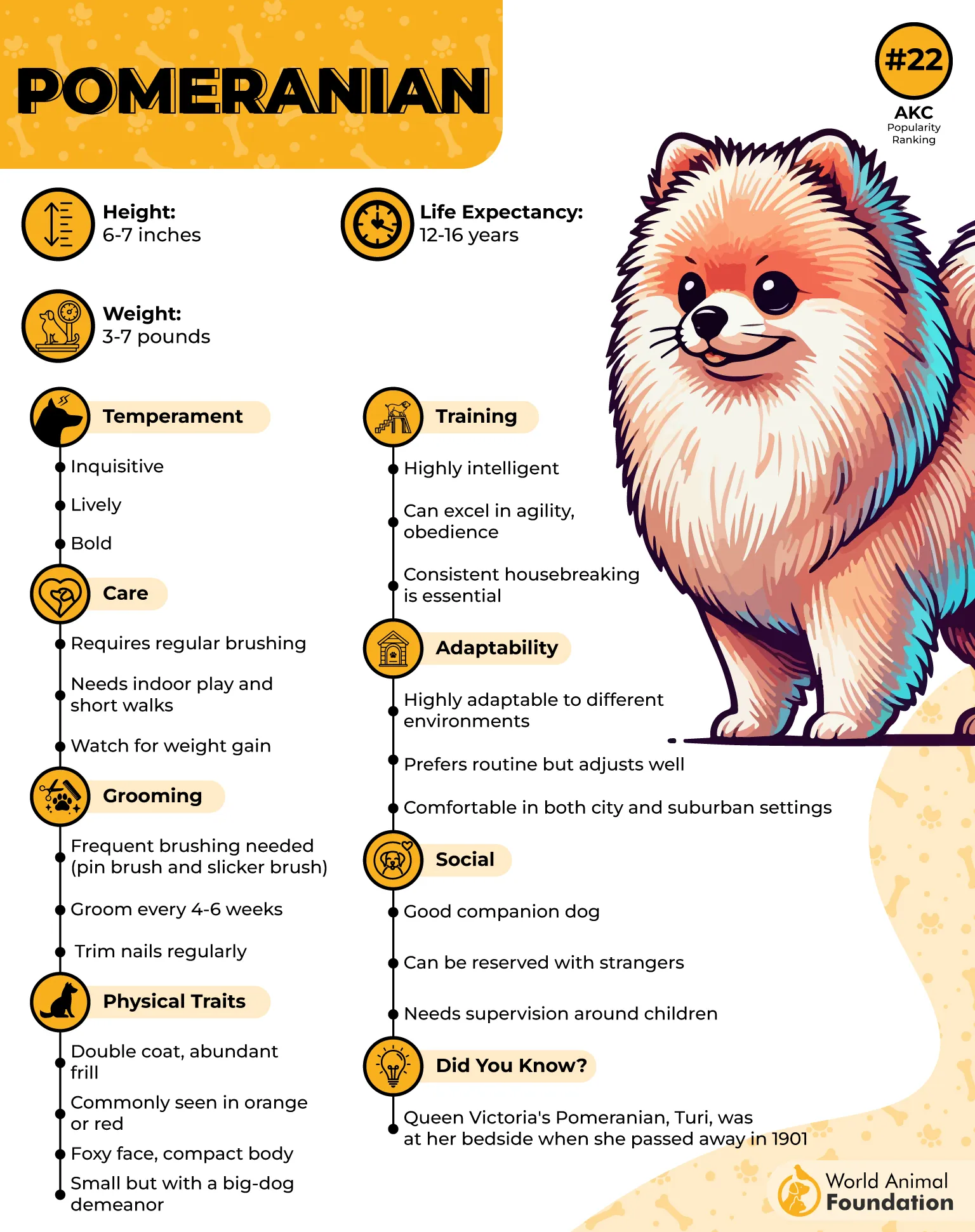
Pomeranians excel in emotional support roles, offering cozy cuddles, calming companionship, and those irresistible puppy eyes that instantly melt stress away. They’re pros at learning fun tricks and small helpful tasks around the house, like opening cabinet doors, which is pretty impressive for a dog that can fit in your handbag!
Why They Make Good Therapy Dogs:
✔ Pocket-sized emotional support with maximum fluff
✔ Big personality in a tiny package — sassy and sweet!
✔ Master of snuggles, petting, and mood-lifting magic
Pomeranians are very alert and sensitive to changes around them, often barking at new stimuli. This can sometimes lead to a habit of excessive barking in various situations. They tend to be protective of their territory and may bark at unfamiliar outside noises.
Fun Fact: Poms often act like your personal cheerleader — ready to brighten your day with a wagging tail and a “you’ve got this” attitude, even on the toughest days.
5. Giant Schnauzer
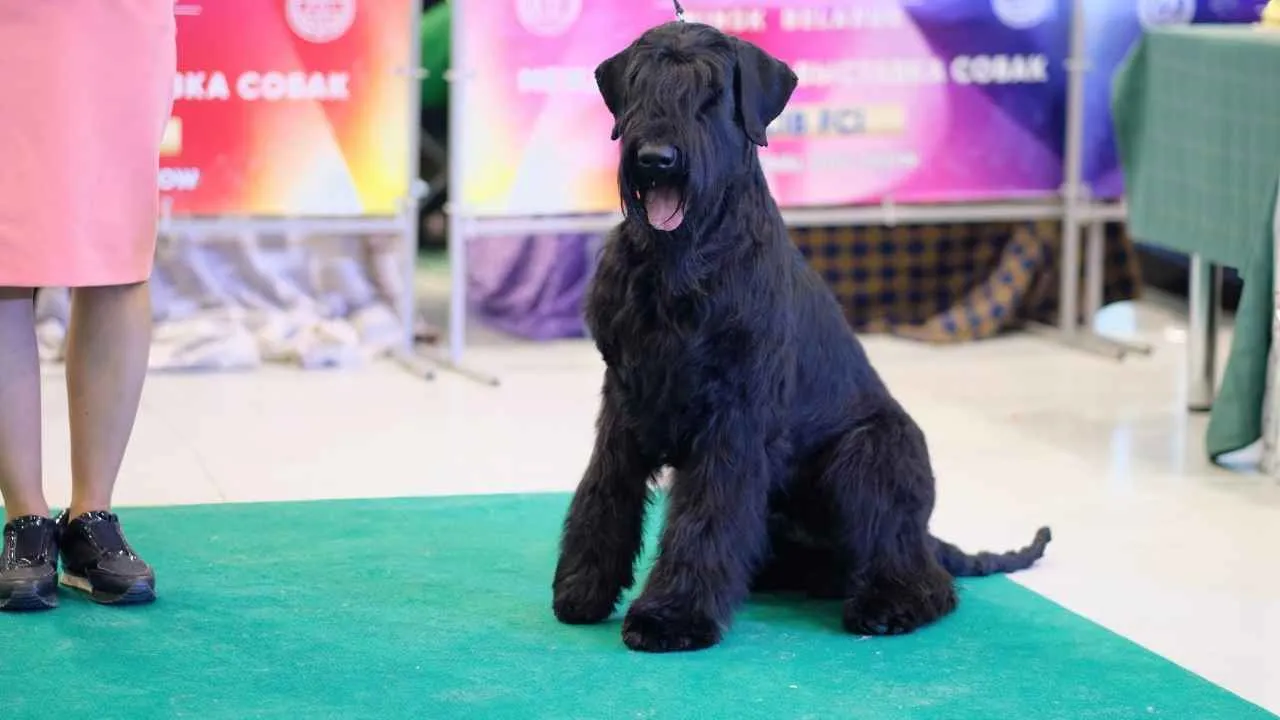
Meet the Giant Schnauzer — the perfect blend of brains, brawn, and heart. These impressive large dogs aren’t just eye-catching with their distinguished beard and eyebrows; they’re also highly intelligent, loyal, and fiercely protective. That makes them fantastic service dogs for folks who need physical assistance paired with a sense of security.
Originally bred to work on farms, Schnauzers can make wonderful pets for the right family, but they are generally not recommended for first-time dog owners.
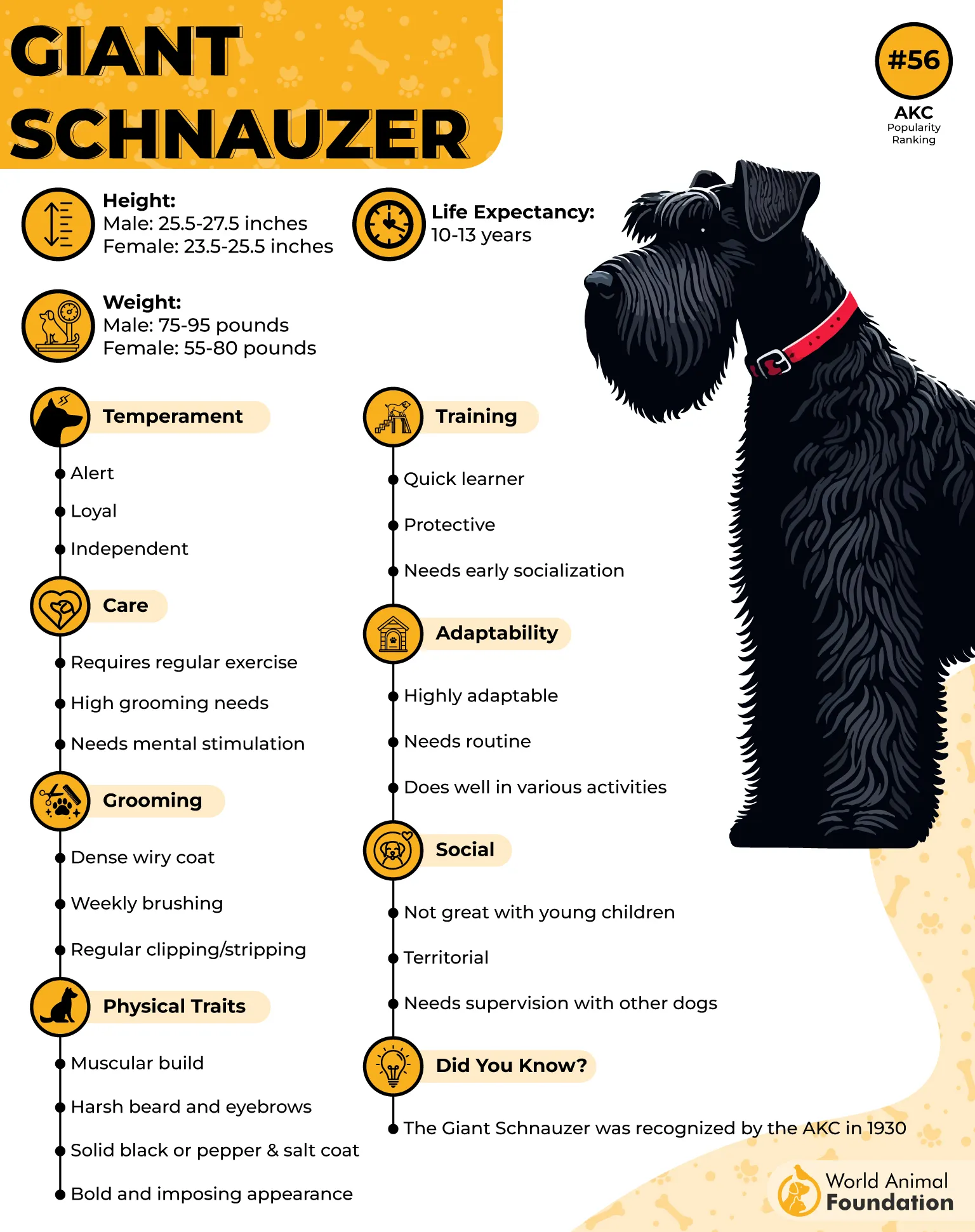
Giant Schnauzers can guide the visually impaired, assist with mobility tasks, and provide a calming presence for people dealing with anxiety or PTSD. Their trainability is off the charts, and their versatility means they adapt easily to different service roles.
Why They Make Good Therapy Dogs:
✔ Powerful and protective with a soft spot for their humans
✔ Highly intelligent and eager to learn all the right moves
✔ A steadfast companion who takes service seriously (but still loves belly rubs!)
Giant Schnauzers are more energetic than many other breeds and require a substantial amount of daily exercise to stay healthy and happy. They also dislike being left alone for extended periods. It’s important not to neglect them or leave them alone in the yard for a whole afternoon.
Plus, they have a knack for letting you know when something’s up — consider them your four-legged security system with a loving twist.
Fun Fact: Giant Schnauzers often take their “job” so seriously, they’ll sometimes act like a tiny personal bodyguard, making sure no suspicious squirrel or delivery person gets too close without a thorough sniff test.
6. Standard Schnauzer

Meet the Standard Schnauzer — a dog that’s the Swiss Army knife of the dog world. These pups shine not only in therapy and service roles but also as rescue dogs and performance event champions.
Compact, wiry, and sporting those iconic bushy eyebrows and mustache, they look like they just walked out of a classic detective movie. Sherlock would approve.
Standing about 18 to 19 inches tall and weighing between 25 and 45 pounds, Standard Schnauzers come in sleek black or salt-and-pepper coats, with occasional dark or silver-gray variations that add extra flair.
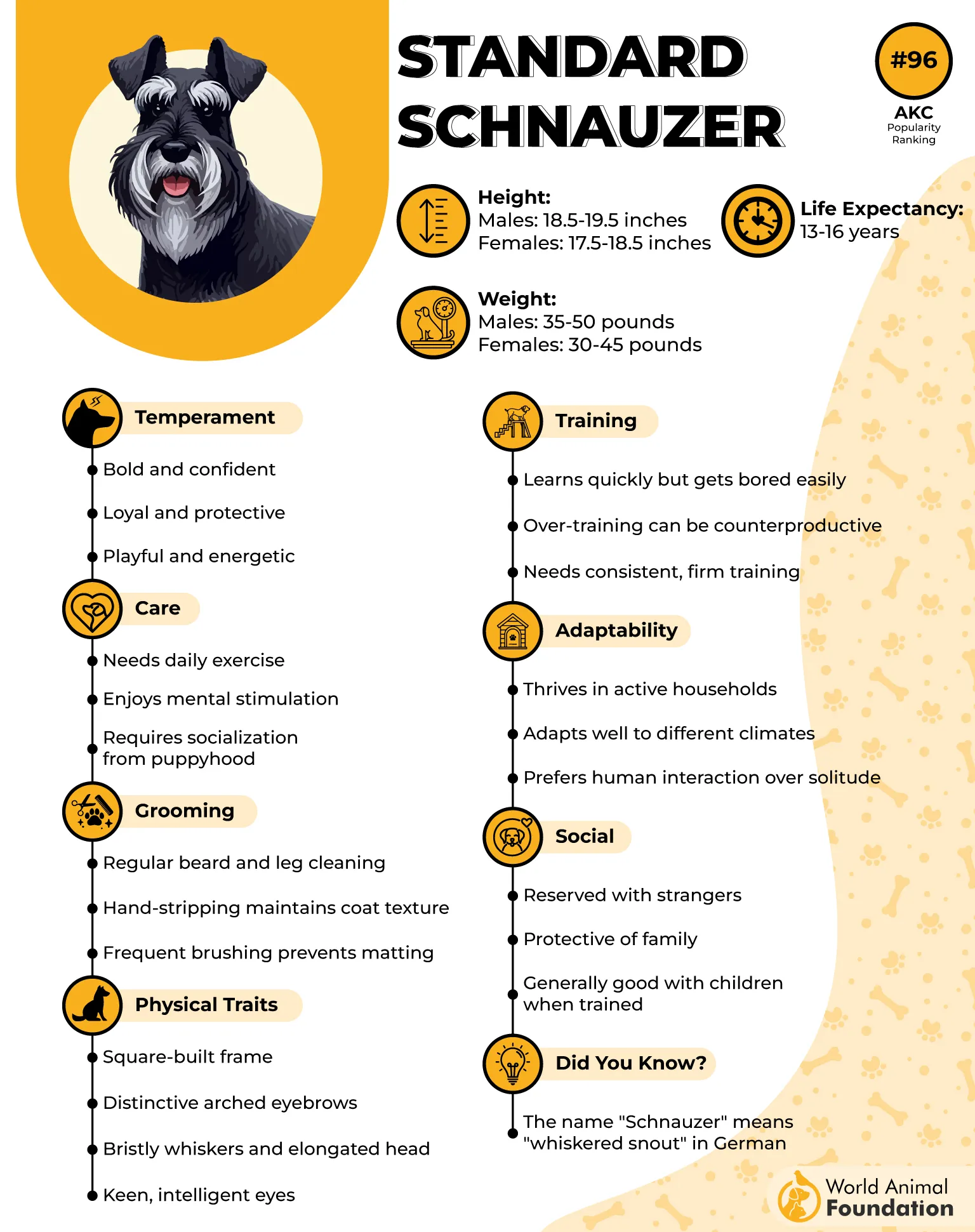
But don’t let their dapper looks fool you — their wiry coats need serious grooming TLC. Think twice-weekly combing, quarterly trims, and professional shaping to keep that beard and brows in top form.
Why They Make Good Therapy Dogs:
✔ A versatile working dog with brains, brawn, and a stylish beard
✔ Fiercely loyal and watchful — your family’s very own furry bodyguard
✔ Needs mental and physical activity, so you’ll never get bored together
Smart as a whip, these pups get bored fast if left twiddling their paws. Without at least 30 minutes of daily activity, their anxiety might kick in, and they could turn your shoes into chew toys.
And true to their watchdog nature, they can be a bit territorial and suspicious of visitors, which means a calm, patient owner who’s ready to socialize and train them is a must, according to PetMD.
Fun Fact: That famous Schnauzer mustache? It’s not just for show — it’s the ultimate expression of canine sophistication (and sometimes, an excellent snack catcher).
7. Miniature Schnauzer
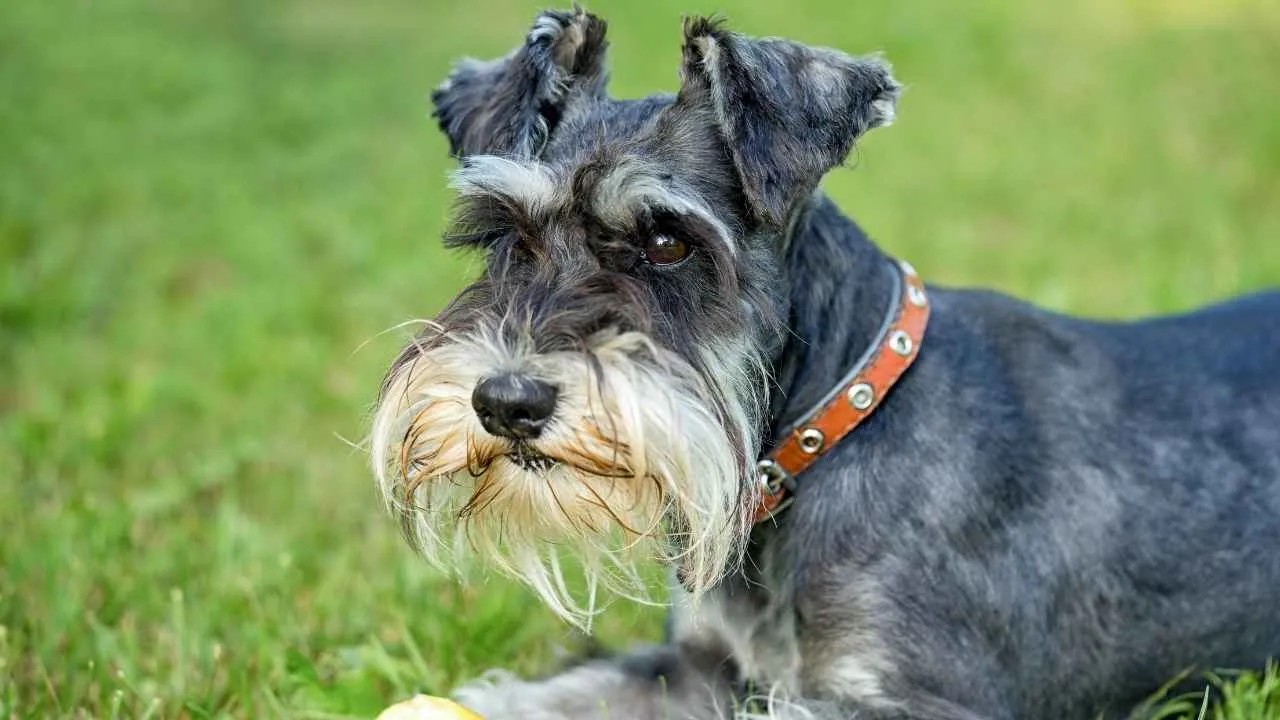
Small but mighty, the Miniature Schnauzer is the pint-sized guardian you never knew you needed. Bred to be watchdogs, they’re alert, intelligent, and protective — basically, the ultimate small-package security system.
Miniature Schnauzers are small-sized dogs, typically standing 12 to 14 inches tall at the shoulder and weighing between 10 and 20 pounds.
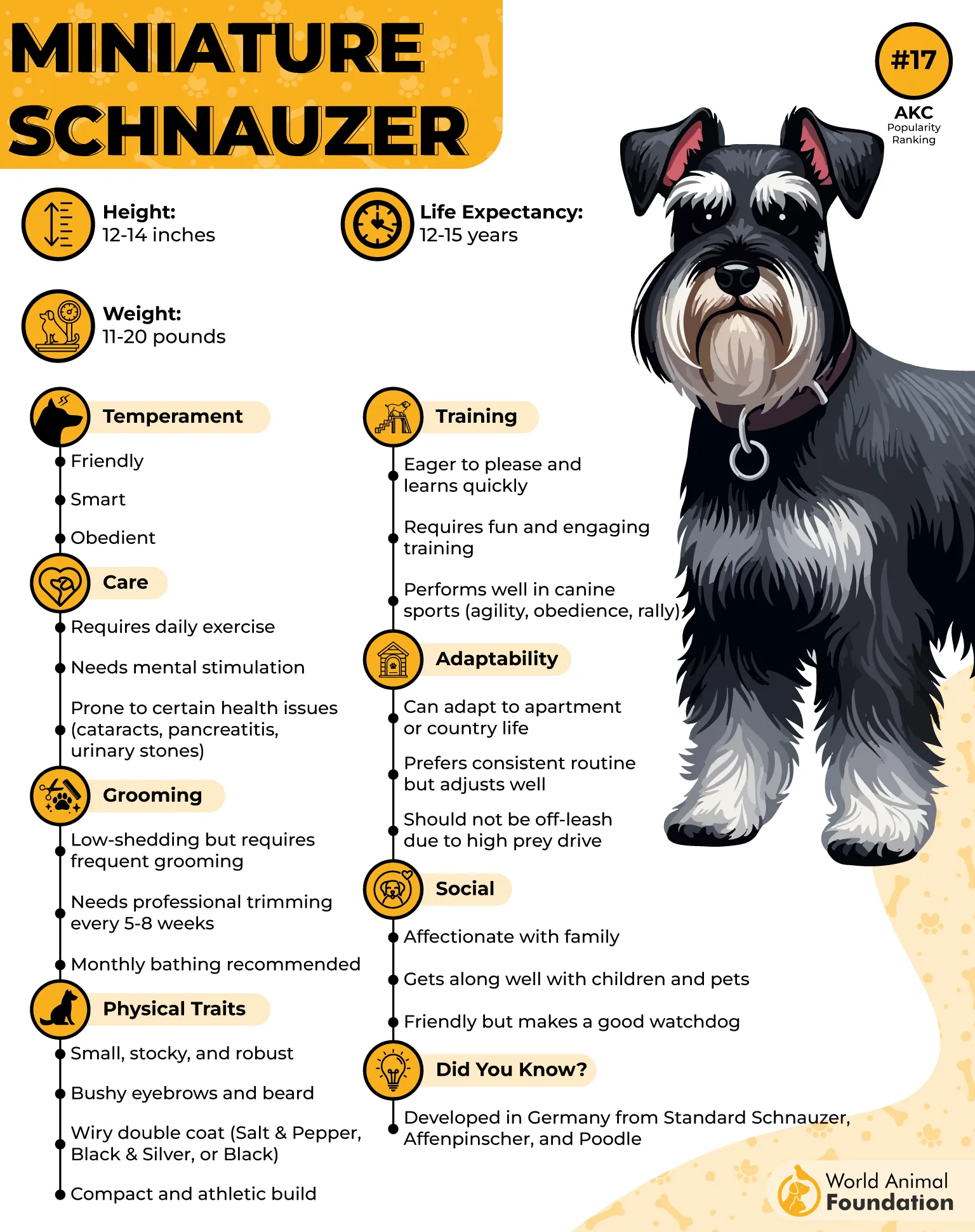
As emotional support animals, Minis excel at soothing their humans with snuggles and steadfast loyalty. And their smarts make them quick learners for any task, making them fantastic service dogs for a variety of needs.
Why They Make Good Therapy Dogs:
✔ A small, alert watchdog with a heart bigger than their size
✔ Brilliant and trainable, with a dash of charming stubbornness
✔ Loyal companions who give emotional support with a side of sass
Their instincts make them highly effective guard dogs, but they’re also champions of comfort and companionship. Now, here’s the catch: Minis are a bit like the clever kid in class who sometimes wants to run the show.
Miniature Schnauzers are intelligent and charming dogs that can comfortably live in a city apartment or on a large farm. They enjoy both playtime and relaxing naps but require at least an hour of exercise daily, along with mental stimulation to keep their lively minds engaged.
They can be stubborn and independent, which means training requires patience, consistency, and maybe a treat or two (or three). But once they decide you’re the boss, they’ll be your shadow for life — loving, protective, and endlessly supportive.
Fun Fact: Miniature Schnauzers have a secret weapon — their expressive eyebrows can melt even the toughest hearts. Seriously, try saying no to that face!
Conclusion
Therapy dog breeds like the Cavalier King Charles Spaniel, Poodle, Bichon Frise, French Bulldog, Pug, and Yorkshire Terriers are well-suited for therapy work due to their gentle temperament, friendly disposition, and ability to connect with human emotions. These specific breeds are often used as emotional support dogs, psychiatric service dogs, or medical alert dogs, providing support in therapy sessions and animal-assisted therapy.
Dogs are trained through special training and therapy dog certification to become highly trained companions in a therapy setting. While high energy can help in some roles, many popular choices are small breed dogs that bring smiles, unconditional love, and comfort to those with mental disabilities. German Shepherds and other dogs also make great therapy dogs when properly and specially trained, showing that the best breeds combine the right qualities and willingness to serve.


